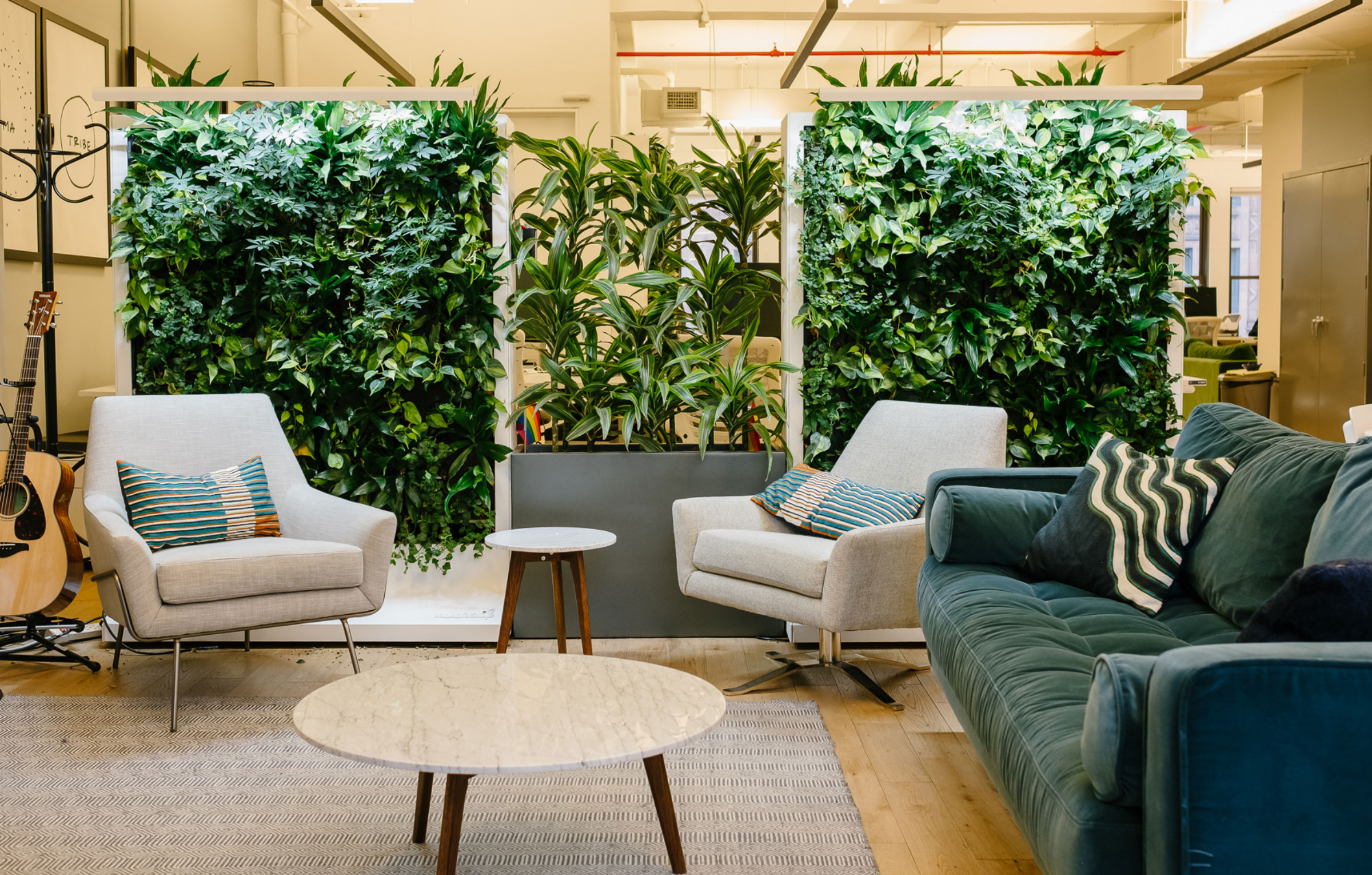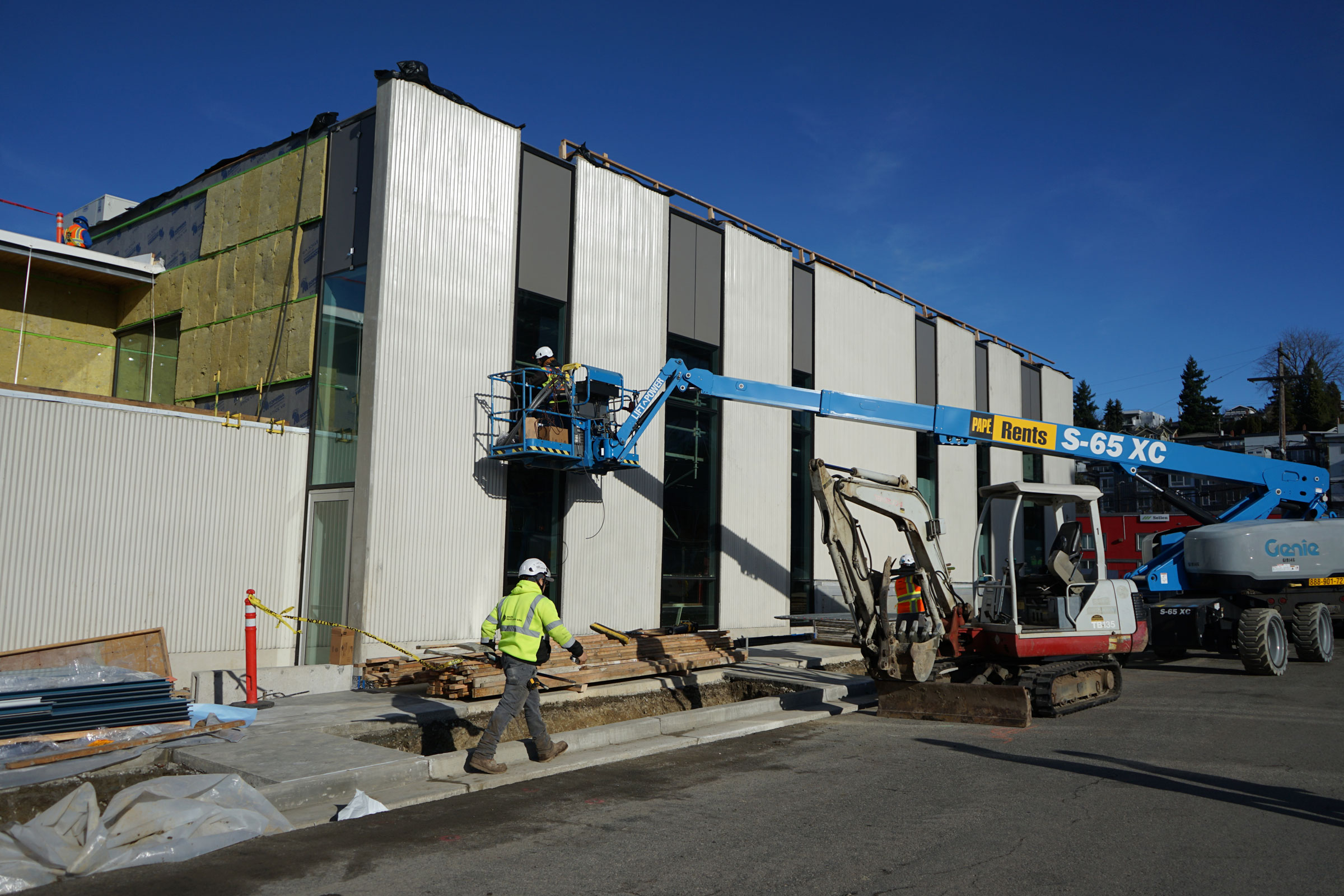The concept of design is more than just the layout of a building—it’s a multi-faceted approach. A great design transitions throughout a project’s lifespan, is adaptable, and has the ability to meet the needs of a wide variety of people. Creating a world-class design is about creating an exceptional experience. With the lingering effects of the Covid-19 pandemic, facility managers and building operators are feeling pressure to design operational standards in order to meet heightened customer expectations.
Before facility managers can meet the needs of their customers and employees, they must first understand what customers are most concerned about. Ambius, a global leader in creating smarter, healthier spaces, conducted a survey of 3,000 people featuring employees working in a range of environments. Factory and warehouse workers, hospital staff, restaurants employees, teachers, and general office colleagues were asked about their most important features of future workplaces. Clean, pure, and healthy air (62%), efficient air circulation (54%), regular disinfecting (52%), and unpleasant odors (42%) were some of the most popular responses.
By addressing these concerns, building designers and facility managers will show that the health and safety of their building occupants is a top priority. Designers and managers can use these practical tips for designing healthy spaces and creating an exceptionally clean experience for tenants.
1. Improve indoor air quality.
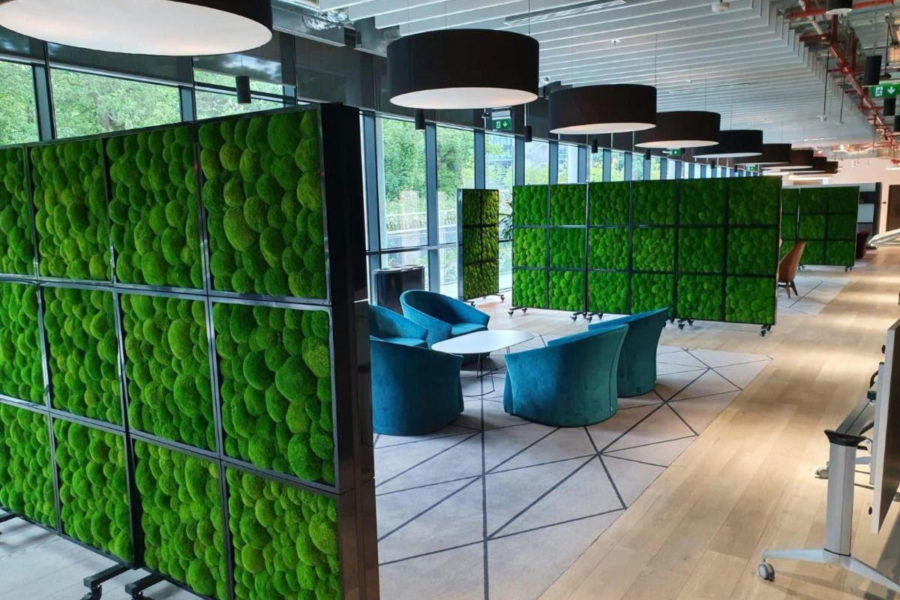
Modular partitions and green wall dividers utilize moss, live or replica plants to separate spaces, providing a welcome contrast to a traditional cubicle wall. Photo courtesy of Ambius
Designing a clean environment begins with access to clean, healthy air. The Environmental Protection Agency (EPA) estimates indoor air pollutants can be two to five times higher than outdoor levels. Any shared space, whether it’s lodging facilities, office, commercial environments, or even residential spaces need to have updated HVAC systems, along with filtration units designed to clean the air.
HVAC systems with MERV4 filters and UV are great for fresh air and air exchange, but these units are not equipped to attack and decontaminate airborne particles. A single cough or sneeze can expel germs as far as 27 feet at almost 100 miles an hour. According to Harvard Health, aerosolized viruses, including the coronavirus, spread through droplets that become airborne when people cough or sneeze and can remain in the air for up to three hours.
Air decontamination units such as, VIRUSKILLERTM by Ambius, can provide real-time protection with higher efficacy, taking control of the airflow to continuously draw contaminated air away from the breathing zone, replacing it with clean, decontaminated air. These specialized air decontamination units deactivate 99.9999% of airborne viruses in a single air pass.
When implementing these measures to improve indoor air quality, managers should also consider units with front-facing monitor displays to provide building occupants the reassurance and peace of mind.
2. Consider olfactory comfort.
A truly well-designed space incorporates elements that awaken multiple senses. It’s equally as important for a space to look clean as it is to smell clean. According to the 2020 Harris Interactive poll, 56% of adults would assume a space is not clean if they experience unpleasant odors in an organization’s facility.
When the sense of smell is engaged in combination with other senses, it can increase, or decrease, brand impact on the consumer by 30 to 70%. No matter how clean a space actually is, if a facility doesn’t smell clean, people will not perceive it as such. Masking foul smells with harsh chemicals and aerosols will do more harm than good. In order to create a smarter, healthier environment, building designers should consider incorporating premium scenting and odor remediation throughout the building and around high traffic areas.
Enhance premium scenting with odor remediation technology in high-traffic areas such as restrooms, break rooms, and near trash facilities. This technology is designed to release micro-droplets that remove, neutralize, and eliminate odors entirely. Fresh, bright scents such as zesty citrus, energizing mint, and fresh cucumber can be leveraged to foster confidence in a healthy environment, offer the reassurance of well-being, and amplify feelings of cleanliness.
3. Create a positive hand hygiene culture.
In a recent study by Rentokil Initial, 87% of respondents expect their employer to provide hand sanitizer in the workplace. Adults touch as many as 30 objects in 60 seconds, and contaminated hands can transfer viruses to up to 14 other surfaces and subjects. To limit the spread of illnesses, facility managers can design a culture of hand hygiene. This includes getting buy-in from senior leadership, communicating hand hygiene requirements to staff, providing training, monitoring compliance, and pursuing continual improvement.
Every building will be different, so the number of hand hygiene units needed for an indoor space will vary. Start by considering all high-traffic areas in and around the building. These areas could include break rooms, common areas, elevator banks, reception areas and lobbies, kitchens, and restrooms. Building operators can use the Ambius Hand Hygiene calculator to help identify how many mobile units are recommended for a particular space.
Hand hygiene depends primarily on individual accountability. Whether or not a person washes their hands well or even on a regular basis is up to the individual. Placing mobile hand hygiene units around the facility will serve as a visual cue of improved hygiene standards and will remind tenants that “right now” is a great time to sanitize.
4. Design with wellness in mind.
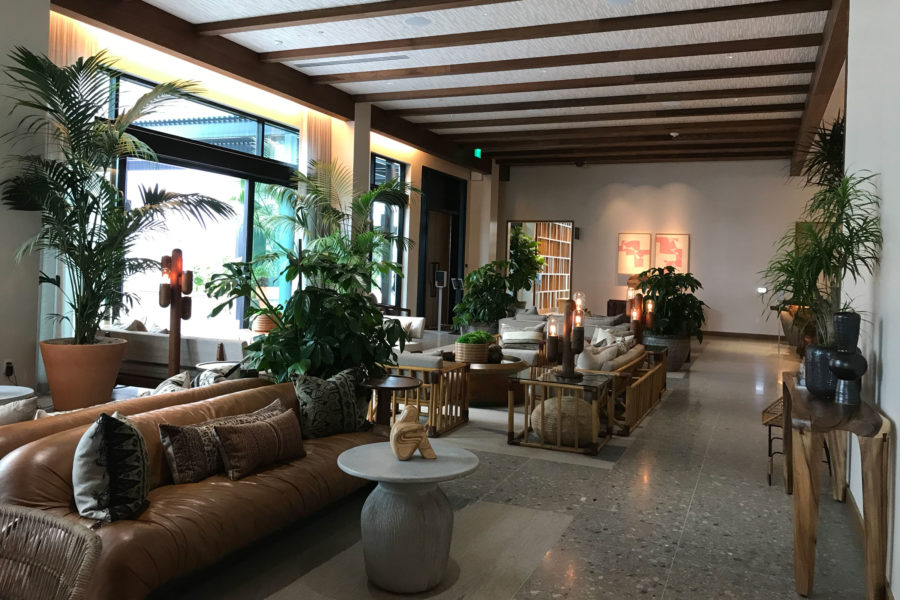
Beautiful interior plants, combined with the right décor and lighting, are the hallmarks of an inviting interior design. Photo courtesy of Ambius
The same Ambius study of 3,000 employees showed that 55% of respondents believe incorporating plants and biophilic design into a workspace can help improve mental health and wellbeing. Businesses can reap rewards by incorporating nature into commercial spaces through biophilic design, which capitalizes on humans’ innate desire to interact with nature for positive benefits.
To design with wellness in mind, consider replacing stale and stagnant partition walls and barriers with vibrant plants of various heights and colors. Mobile green walls, potted plants, and other biophilic design elements can be used to not only encourage safe social distancing but also to brighten a room and serve as visually pleasing connection points for building occupants.
Take this method a step further by transitioning the design into the exterior building space. Construct more defined outdoor spaces, parklets, and enclosed patios with planter borders. Enhance the exterior landscaping by using rocks or potted plants to create separate one-way systems, with one pathway to enter the building and another pathway to exit.
These design techniques can be adaptable to the season and to a building’s unique environment. Whether inside or outside, adding mobile green walls, potted plants, and other natural elements to the building’s architecture is a great way to encourage safe social distancing while enhancing aesthetics and promoting wellness.
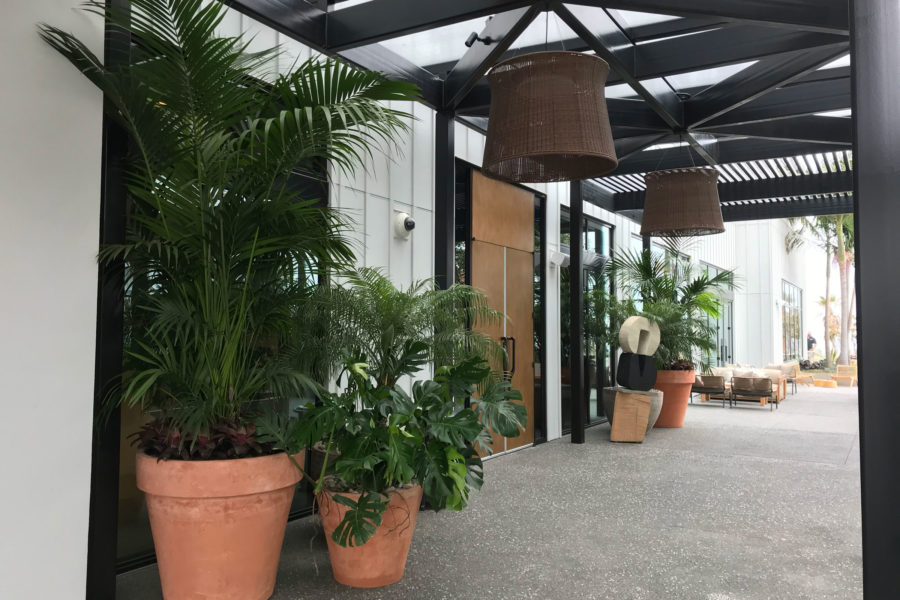
Large plant containers can be used to mimic curbs, walkways, aisles, and fences, helping to establish boundaries and imply the structure of social distancing. Photo courtesy of Ambius
5. Take disinfection beyond a simple “wipe-down” method.
Put people at ease by updating current standards and improving surface disinfection practices. High touch points such as door handles, handrails, switches and buttons, remote controls, and faucets can be easily overlooked, but they also serve as a magnet to dirt and germs. Although traditional spray and wipe-down cleaning methods can help remove dirt and reduce pathogens from a surface, they can also miss up to 50% of germs on surfaces.
It’s important to note that disinfectants need time to kill or inactivate the pathogens they contact. Without giving disinfectants the proper dwell time, the effective rate may be reduced. Also, not all disinfectants can kill SARS-CoV-2. In the US only products found on the EPA’s List N, have been approved for use against SARS-CoV-2.
Conduct regular and extensive walk-throughs of the facility. Get to know and understand the building’s unique high traffic and high touch point spaces and set aside enough time to properly disinfect surfaces on a regular basis.
6. Invest in third-party assessments.
Redesigning operational processes to meet increased health and safety protocols and heightened expectations can be a difficult task. Even well-designed buildings or operational plans require maintenance and adjustments to keep up with ever-changing protocols.
Health and safety evaluations have been utilized in other industries for decades to ensure all quality, safety, and public health guidelines are met. This same process can be used in any business to reinforce operational excellence, proper hygiene protocols, and issue resolution capabilities. The ability for an organization to modify procedures, best practices, and training in response to changing protocols or assessment data is a sign of an agile, resilient safety program.
Investing in third-party assessments provide businesses with valuable insights into the overall execution of current processes and how those processes match up with top industry standards. For multi-location facilities, this insight can be a critical step in ensuring the same high brand standards are being executed across all locations.
Third-party assessment partners provide a consolidated view of location performance data through standardization, making identifying problem areas and implementing meaningful changes easier for organizations. Businesses can leverage this unbiased feedback to address weak points, capitalize on strong points, and map out a cohesive operational design plan tailored to the brand’s specific needs.
There are many facets to designing healthy spaces, but these six tips can help any organization structure a foundation designed with clean in mind. When businesses work to improve air, hand and surface hygiene, incorporate premium scenting and natural elements, and invest in third-party assessments, building occupants will feel less stress knowing their health and safety are a top priority. Designing a space with clean in mind is a great way to promote wellness, motivate employees, and highlight the organization’s commitment to health and safety.


